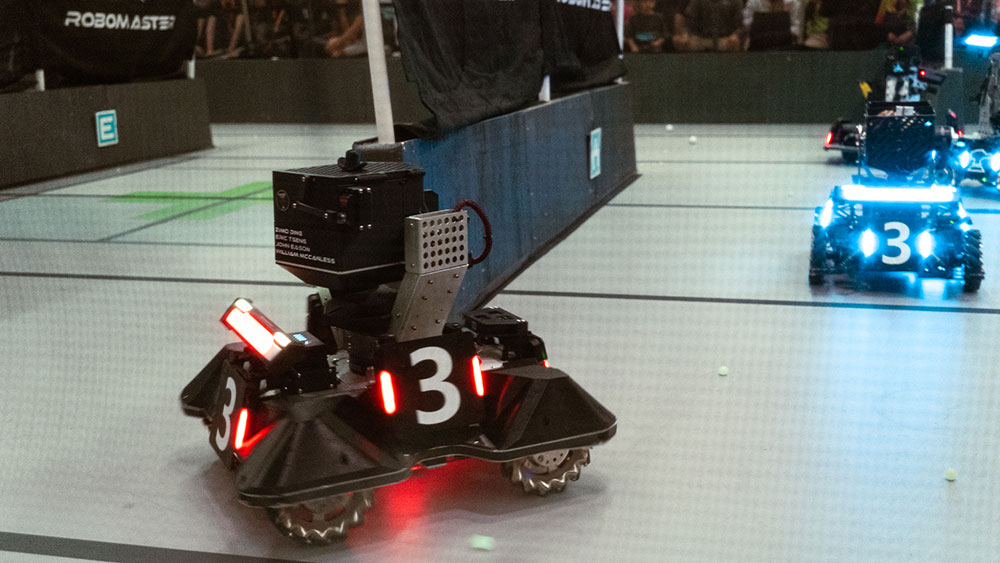
Texas A&M University’s Robomasters Robotics, the university’s premier, multidisciplinary student robotics team, recently returned from the RoboMaster North American Regional competition held in Seattle, Washington, on July 7-9, with two spectacular achievements: placing first overall in the 1-versus-1 competition and third overall in the 3-versus-3 competition. They competed against 18 universities from the United States, Canada, Mexico, Italy, Singapore and Japan.
Teams from more than 400 colleges and universities worldwide participate annually in RoboMaster events, which allow students to improve their practical engineering skills and integrate many robotics-related disciplines such as machine learning, embedded systems, mechanical design, inertial navigation and human-machine interaction.

During the event, robots from each team compete against each other by engaging in robot-to-robot combat, shooting rubber projectiles at force sensors on enemy robots to deduct “health points.” Human operators, or drivers, control the robots through a first-person view and capture objectives on the competition field to gain an advantage. The 1-versus-1 competition emphasizes individual combat between the “Standard” robot, which fires the rubber, paintball-sized projectiles. The 3-versus-3 competition expands to include the “Hero” robot, which fires golf balls at enemy robots and structures, and requires students to build the “Sentry” robot — a completely autonomous robot that defends a team’s base and allied robots.
“These are the highest combined placements we have ever received, and the first time we have won the 1-versus-1 competition,” said Nathaniel Speed, electrical engineering senior who served as vice president of competitive RoboMasters and oversaw all robot design and fabrication for the 140-member team for the last competition season.
Last year, the team placed second in the three-versus-three main category at the annual competition hosted in the Memorial Student Center at Texas A&M.
Keegan May, a first-year student in the Texas A&M Department of Multidisciplinary Engineering and vice president of operations for the organization, participated in the event as the “Hero” driver. He, along with nuclear engineering junior Elizabeth Crumrin and multidisciplinary engineering technology junior Jack Apel, controlled and directed the robots to their ultimate victory.
“The driving is a lot of fun,” May said. “It's like a video game where you have your user interface, and you see out of a video transmitter and navigate with the keyboard. Computer vision helps a lot with the robots’ assisted aim.
Established in 2018, the mission of Texas A&M RoboMasters is to provide an avenue for students from various engineering majors and other backgrounds to develop skills and apply their technical knowledge in the design and development of robots.
“I’m really proud of this team, the hard work and dedication each and every member have put in has truly paid off,” May said. “I’m excited for the future of this organization.”